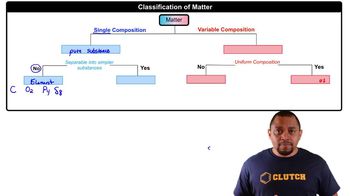For each of the following alloy compositions, indicate whether you would expect it to be a substitutional alloy, an interstitial alloy, or an intermetallic compound: (a) Fe0.97Si0.03 (b) Fe0.60Ni0.40 (c) SmCo5.
Indicate whether each statement is true or false: (a) Intermetallic compounds have a fixed composition. (b) Copper is the majority component in both brass and bronze. (c) In stainless steel, the chromium atoms occupy interstitial positions.
 Verified step by step guidance
Verified step by step guidanceKey Concepts
Intermetallic Compounds

Brass and Bronze Composition

Stainless Steel Structure

Indicate whether each statement is true or false: (c) Nonmetallic elements are never found in alloys.
An increase in temperature causes most metals to undergo thermal expansion, which means the volume of the metal increases upon heating. How does thermal expansion affect the unit cell length? What is the effect of an increase in temperature on the density of a metal?
State whether each sentence is true or false: (b) Metals have high electrical conductivities because they are denser than other solids.
The molecular-orbital diagrams for two- and four-atom linear chains of lithium atoms are shown in Figure 12.21. Construct a molecular-orbital diagram for a chain containing six lithium atoms and use it to answer the following questions: a. How many molecular orbitals are there in the diagram?
